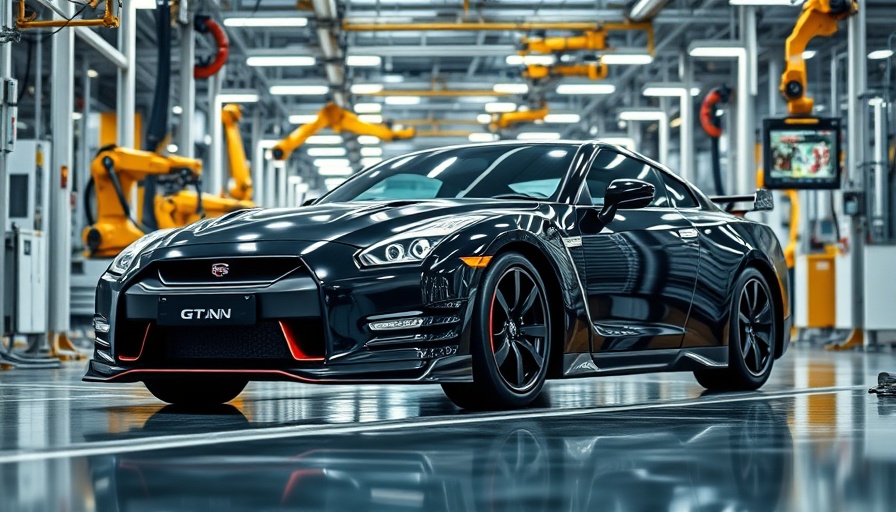
The Rise and Fall of the R35: A Legacy of Performance
The end of an era has arrived for car enthusiasts as the R35 Nissan GT-R, affectionately dubbed "Godzilla," completes its incredible journey after nearly two decades of redefining supercar performance. The final model, an exclusive Premium T-Spec in a striking Midnight Purple, came off the production line at Nissan's Tochigi plant in Japan. With approximately 48,000 units built, the R35 has cemented its position as the most successful generation of GT-R ever made.
Why the GT-R Matters: A Cultural Icon
Born in 2007, the R35 was more than just a car; it was a phenomenon that democratized supercar performance. By harnessing advanced all-wheel-drive technology and a powerful twin-turbo V6 engine, the GT-R offered accessibility to mind-blowing speeds, making it an icon among car enthusiasts and casual drivers alike. This was a vehicle that not only performed exceptionally on the racetrack but also proved feasible for everyday use. The craftsmanship behind each car was impeccable, as every engine was meticulously built by master technicians known as takumi, keeping the spirit of traditional craftsmanship alive.
Nissan's Vision for the Future: The R36 and Beyond
Nissan's recent announcements also hint at exciting developments for the GT-R's successor, the R36. With evolving automotive regulations and a global push towards sustainability, the new model may follow an electrified path. The Hyper Force concept, an outrageous all-electric performance vehicle, showcases Nissan's direction, combining e-4ORCE all-wheel control and solid-state battery technology to achieve unprecedented power outputs. However, the brand is also considering a hybrid approach that merges internal combustion engines with electric power. This could preserve the driving excitement fans have come to expect from the GT-R name while navigating stricter emissions standards worldwide.
What Does This Mean for Car Enthusiasts?
This transition period is critical for Nissan. As they focus on improving their financial position and consolidating operations, the next GT-R will likely be timed for release when the company can deliver cutting-edge technology with the proper margin considerations. Enthusiasts should take heart, as Nissan's commitment to the GT-R legacy remains strong. The spirit of performance and innovation, which the GT-R has exemplified, still has a vibrant future.
The Future of Performance Cars: Electric or Hybrid?
As we consider the future of performance vehicles, the conversation increasingly revolves around electric and hybrid technology. Brands like Nissan are not alone—many manufacturers are exploring electrification as a means to boost performance while adhering to environmental standards. The next GT-R could serve as a pivotal case study in how legacy performance brands can evolve without losing their identity.
R35's Impact on the Automotive Landscape
As we reflect on Nissan’s R35 GT-R, it's essential to acknowledge its role in shaping the modern automotive landscape. Many upcoming performance vehicles owe their existence to the standard set by the GT-R, which established a benchmark for price versus performance. The automotive industry is evolving, and the farewell to the R35 emphasizes a unique blend of nostalgia and anticipation for what's to come in future automotive innovations.
In closing, while we say goodbye to the R35 Nissan GT-R, we eagerly await what lies ahead. Whether it's a hybrid powerhouse or a beastly electric model, one thing is clear: the legacy of Godzilla will resonate through the hearts of car fans worldwide. By embracing both heritage and innovation, Nissan ensures that the story of the GT-R is far from over.
 Add Row
Add Row  Add
Add 




Write A Comment